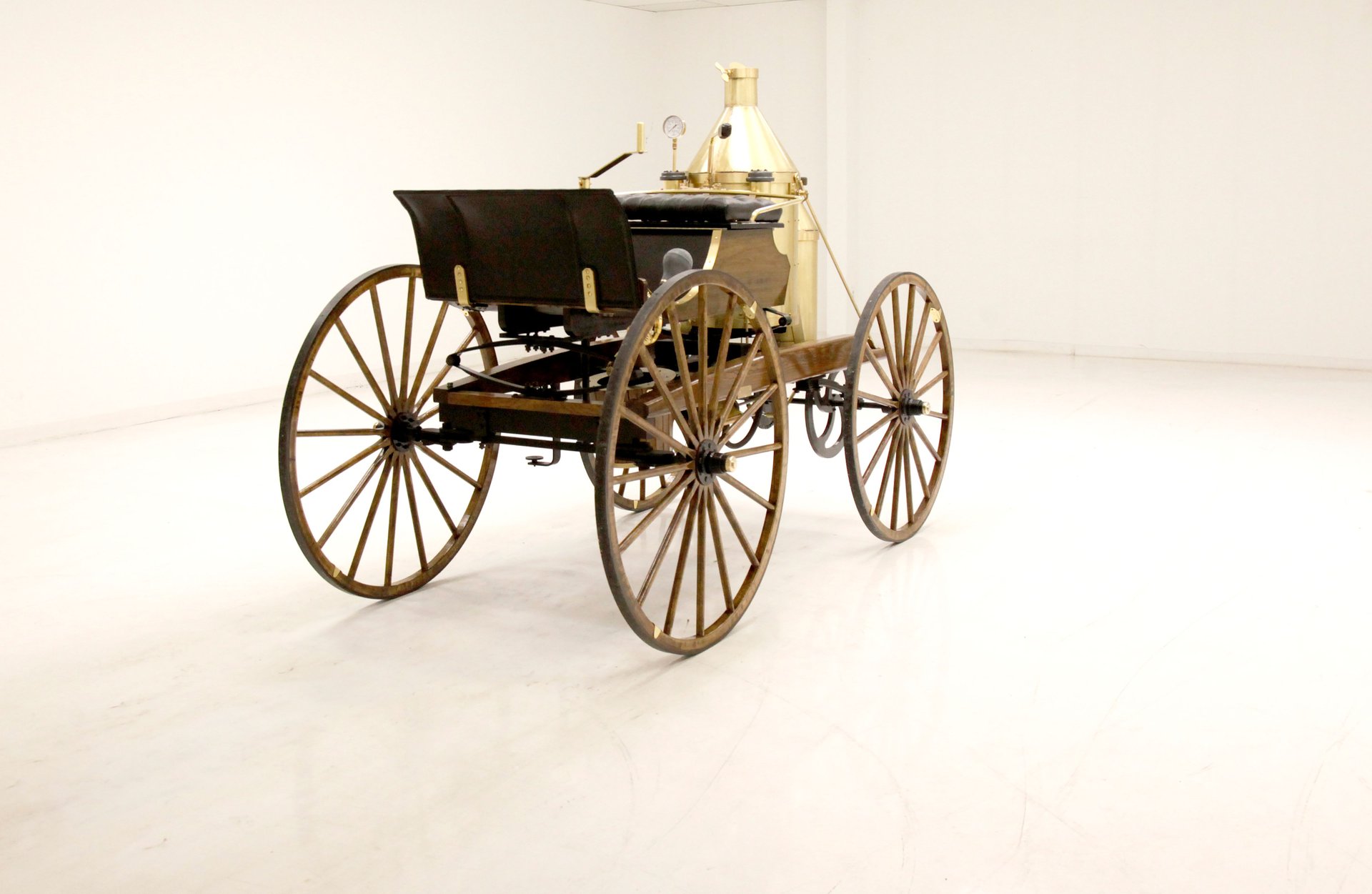1890 Roper
Steam Carriage
Convert Currency
- Stock
- 2998
- Vin
- Bill of Sale
- Miles
- 1
1890 Roper Steam Carriage
1863 Roper Steam Carriage
Dateline Cambridge June 12, 1896: After making a phenomenal mile on a steam bicycle of his own invention, Sylvester H Roper 73 years old was stricken with heart disease and actually died while riding. The dramatic fatality occurred yesterday morning at the new bicycle track along the Charles River. The deceased had for years enjoyed a reputation as an able mechanical engineer who was identified as an expert in the field of steam propulsion particularly when it was applied to a carriage. It is believed he knew of his impending doom, as the steam had been shut off and with no brakes, he needed to come to a rolling stop, however fate intervened and he fell prior to it coming to a full stop.
For consignment from the very talented master craftsman William Eggers of Goshen, Connecticut, we have another masterpiece, a fascinating and historically accurate 1863 Roper Steam Carriage reproduction. Utilizing painstaking research and deciphering old plans and writings of Mr. Roper, and taking exacting measurements from the Henry Ford Museum where the original Roper Carriage resides, we have this beautiful working display.
The construction:
Fashioned from maple and oak and plenty of brass and copper, this very accurate replica of Roper's 1863 creation now graces our halls and is up for sale. Extra-large carriage wheels with wooden spokes and cast iron hubs are wrapped in steel, and provide the levered steering in front, and have no brakes. If one wants to come to a stop, it is done so by cutting off the steam to the pistons. Two brass tanks reside on the back of this creation, one for storage of essential water, and the other is a coal fired boiler to produce the steam, which is funneled through a complex series of tubing to a 2-piston engine. In turn, this energy of 2 HP transfers to the rear wheels via a chain drive that is connected by a gear on the axle end, and a crankshaft on the piston end.
Atop on the front of this carriage is the driver's seat which is a black leather buttoned and tufted seat atop a pedestal with a brass bar for protection from falling off. Controls are seen growing out of the boiler in the form of a stick for the throttle, and steering is accomplished with a brass handle emanating from the floor. A dash curves gracefully upward in the front and it shows an early primitive version of the use of a rack and pinion. Leaf springs are used to dampen the ride which at the time there were really no known roads, merely paths for carriages, so the ride could have been treacherous to say the least.
A fully working example showing as an 1863 reproduction and one of the earliest known “automobiles” which translates with the user of auto, meaning not manual or horse, and mobile of course to be in motion. Wonderfully and painstakingly crafted, a real museum piece, and one of the earliest known examples in the timeline of the invention of the automobile. In fact, in the day, people would pay to see such a sight in the form of a horseless carriage and look on in disbelief.
Classic Auto Mall is a 336,000-square foot classic and special interest automobile showroom, featuring over 600 vehicles for sale with showroom space for up to 1,000 vehicles. Also, a 400 vehicle barn find collection is on display.
This vehicle is located in our showroom in Morgantown, Pennsylvania, conveniently located just 1-hour west of Philadelphia on the I-76 Pennsylvania Turnpike. The website is www.classicautomall.com and our phone number is (888) 227-0914. Please contact us anytime for more information or to come see the vehicle in person.



